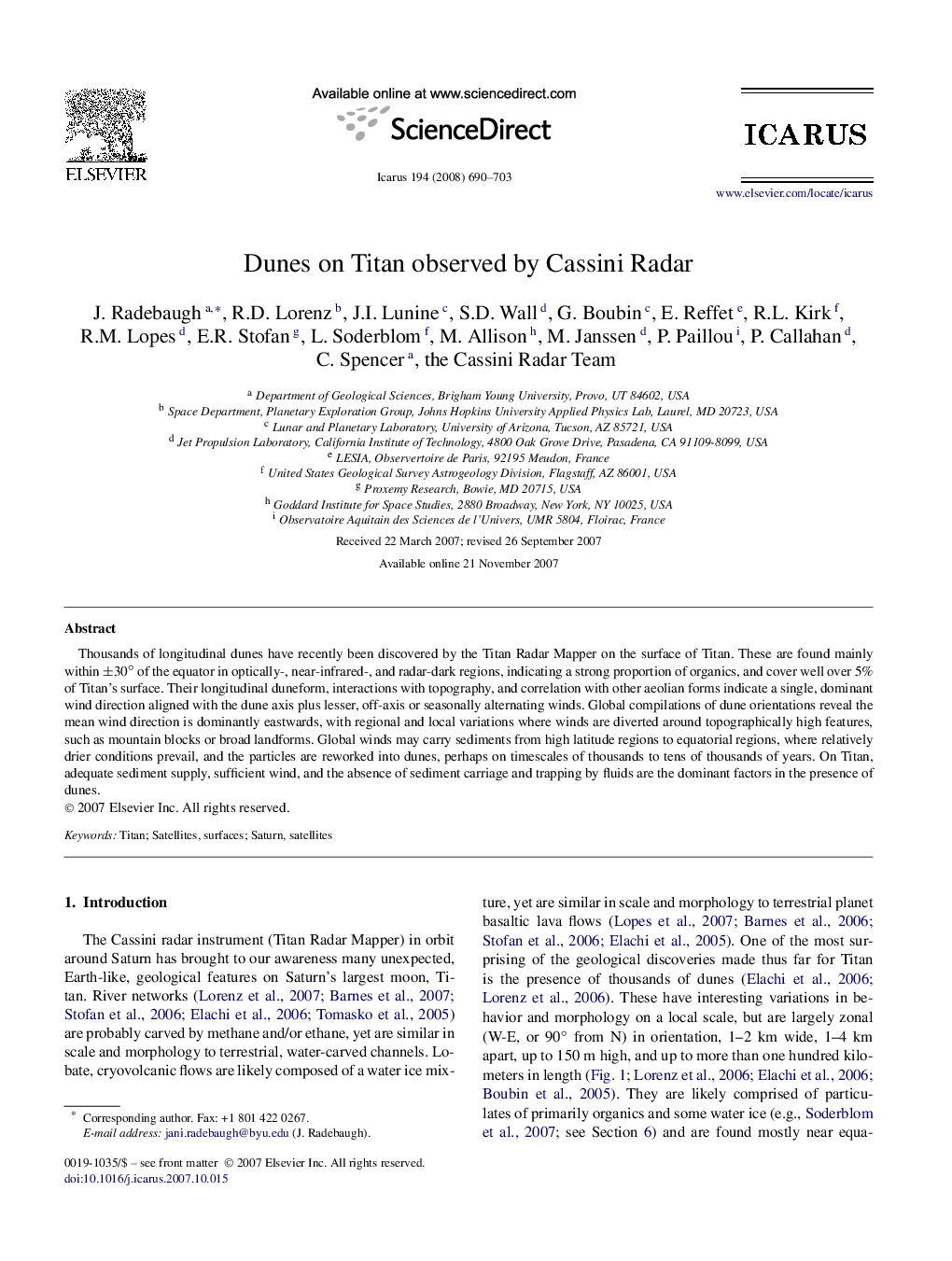| Article ID | Journal | Published Year | Pages | File Type |
|---|---|---|---|---|
| 1775176 | Icarus | 2008 | 14 Pages |
Thousands of longitudinal dunes have recently been discovered by the Titan Radar Mapper on the surface of Titan. These are found mainly within ±30° of the equator in optically-, near-infrared-, and radar-dark regions, indicating a strong proportion of organics, and cover well over 5% of Titan's surface. Their longitudinal duneform, interactions with topography, and correlation with other aeolian forms indicate a single, dominant wind direction aligned with the dune axis plus lesser, off-axis or seasonally alternating winds. Global compilations of dune orientations reveal the mean wind direction is dominantly eastwards, with regional and local variations where winds are diverted around topographically high features, such as mountain blocks or broad landforms. Global winds may carry sediments from high latitude regions to equatorial regions, where relatively drier conditions prevail, and the particles are reworked into dunes, perhaps on timescales of thousands to tens of thousands of years. On Titan, adequate sediment supply, sufficient wind, and the absence of sediment carriage and trapping by fluids are the dominant factors in the presence of dunes.
